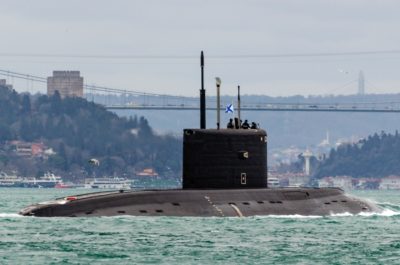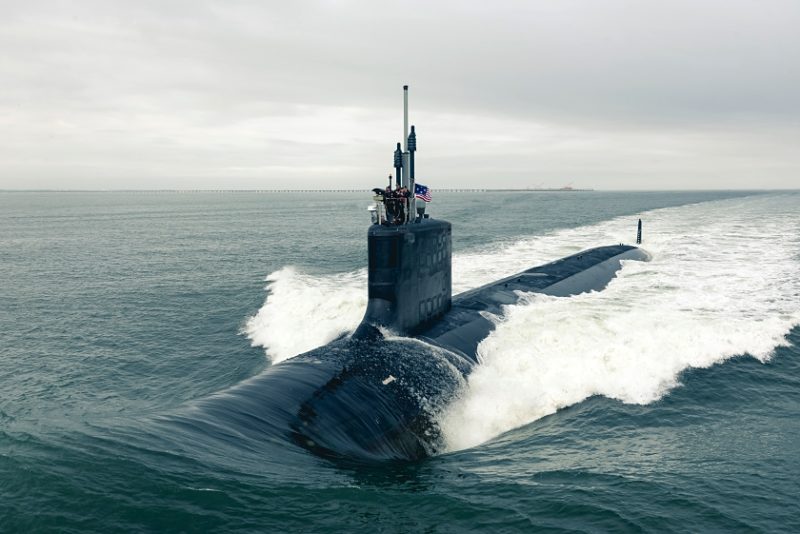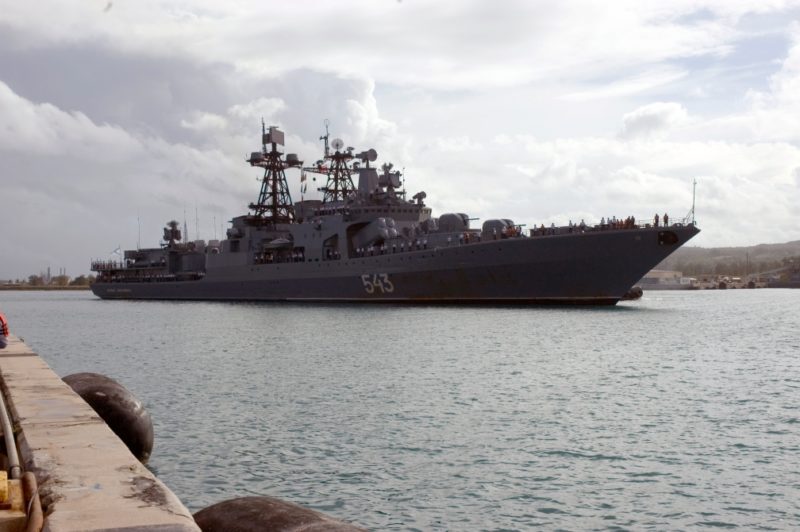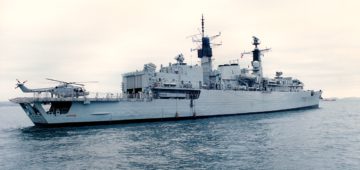- Russians claim they warned off American submarine in Pacific:
“You are in the territorial waters of Russia. Surface immediately!”
- Moscow sends sub armed with long-range land-attack missiles into Black Sea.

The Kalibr cruise missile-armed Improved Kilo Class submarine RFS Rostov-na-Donu was heading through the Turkish Straits at the same time as Russia claimed it had detected and then pursued a US Navy nuclear-powered attack submarine in the Pacific.
The surface transit of the diesel-electric (SSK) Rostov-na-Donu from the Mediterranean to the Black Sea had been forecast for several days. The boat’s progress through Istanbul was well covered by the media, not least this magazine’s own contributors in photographs and video. Click here to view the video on our YouTube channel.

Meanwhile, the Russians issued an unusually detailed account of how they detected and pursued what was allegedly a Virginia Class nuclear-powered attack boat (SSN) on the other side of the world.
The Russians claimed the American vessel was in their territorial waters off the Kurils but the USA’s Indo-Pacific Command issued a rebuttal. Capt Kyle Raines, US Navy, said: “There is no truth to the Russian claims of our operations in their territorial waters.” He added: “I will not comment on the precise location of our submarines.”
According to the Russian defence ministry, on the morning of February 12, while its Pacific Fleet units conducted an exercise off Urup Island, on the Kuril Ridge, ‘a US Navy submarine of the Virginia type was detected’, which had made a ‘violation of the state border of the Russian Federation.’

In Moscow the defence attache at the US Embassy was called in by the Russian defence ministry to get a telling off and received a diplomatic note of admonishment. According to a Russian statement this warned that ‘the actions of the American submarine are regarded as a gross violation of international law. The provocative actions of the US Navy ship have created a threat to the national security of the Russian Federation.’
In its account of the incident, the Russian defence ministry revealed that an underwater voice message was broadcast in English to the supposed lurking SSN, which declared: “You are in the territorial waters of Russia. Surface immediately!”
This demand was apparently ignored and so the Udaloy Class anti-submarine frigate RFS Marshal Shapashnikov was sent to try and chase the suspected intruder away. According to the Russian defence ministry ‘the American submarine used a self-propelled simulator to split targets on radar and acoustic monitoring equipment and left the territorial waters of the Russian Federation at maximum speed.’


The Russian Navy carried on with its exercises regardless of the alleged intruder. These included ‘monitoring the underwater environment in order to prohibit violations of the state border of the Russian Federation’ according to the Russian defence ministry.
In the Mediterranean and Black Sea, there was much interest in what the Russians might do with their own submarines, especially the RFS Rostov-na-Donu and her sister boats assigned to either operate out of Tartus in Syria or from Sevastopol and Novorossisk.
While the Rostov-na-Donu, a Black Sea Fleet (BSF) vessel, had very publicly made a transit north through the Turkish Strait – following in the wake of six landing ships of the Northern Fleet and Baltic Fleet, which made their own passage to reinforce the amphibious ships of the BSF – two more Improved Kilos were reportedly in the Eastern Mediterranean, possibly stalking NATO surface units. At least three Improved Kilos were already loitering somewhere in the Black Sea, according to the open source submarine intelligence web site Covert Shores http://www.hisutton.com

The Russian surface fleet firepower assembled in the Eastern Mediterranean and Black Sea was by this week formidable. It included the Slava Class guided-missile cruisers RFS Marshal Ustinov (Northern Fleet) and RFS Varyag (Pacific Fleet) – so-called ‘carrier killers’ armed with Vulcan Anti-ship Missiles (ASM) – while their sister vessel RFS Moskva had deployed along with other units from Sevastopol into Black Sea. It was rumoured Moskva would soon be heading south through the Turkish Straits and into the Eastern Med. The new guided-missile frigate RFS Admiral Kasatonov – armed with Kalibr – was another Russian major surface combatant to for NATO to potentially watch out for.
More Russians submarines – of the nuclear-powered guided-missile (SSGN) and attack boat (SSN) variety – were likely to also be at large in the Atlantic and Mediterranean. NATO likewise has its own SSNs and SSKs on patrol too, not least riding shotgun on the USS Harry S. Truman, ITS Cavour and FS Charles de Gaulle Carrier Strike Groups (CSG) in the Med.

The Russian guided-missile cruiser RFS Varyag, of the Pacific Fleet, seen here off Australia in 2013. Today she is operating in the Mediterranean. Photo: Royal Australian Navy.
At the time of writing the Charles de Gaulle was in the Eastern Med, launching aircraft to conduct surveillance for ground forces fighting the remnants of the ISIL terror group in Syria and Iraq. The Harry S. Truman had, meanwhile, called at Split in Croatia to give her complement some down-time following two weeks of hard work during the Neptune Strike 22 exercise. See our video and article.
If Russian President Vladimir Putin does unleash the dogs of war, no matter how or where exactly he does it, among the units he will probably call upon to carry out precision strikes are the Improved Kilo Class submarines operating somewhere off Ukraine.
The Kalibr land-attack cruise missile of the Kilos has a range of close to a thousand miles, while the BSF also has the same deep strike weapon in its three modern Admiral Grigorovich frigates and four new Buyan-M guided-missile corvettes.
The frigates and corvettes can stand off the Ukrainian shore to unleash a missile bombardment while submarines can remain hidden under the sea until the moment their weapons break the surface and blast off into the sky.
The missile firings might be covering an invasion launched from the landing ships and other vessels assembled in the Black Sea. While the Russian amphibious warfare armada could be a deliberate distraction – from a massive ground assault against the Ukrainian capital of Kiev – it might also be used to mount an assault across the Sea of Azov to take Mariupol or against Odessa in the Black Sea itself.

-
For more on the Ukraine Crisis, including Russian Navy activities, see the March edition of WARSHIPS IFR (published 18.2.22) and watch out for further posts on this web site. The magazine will be available in both hard copy and digital versions.
-
The naval side of the Ukraine Crisis is discussed in the latest episode of our WARSHIPS POD podcast






Comments
Sorry, comments are closed for this item